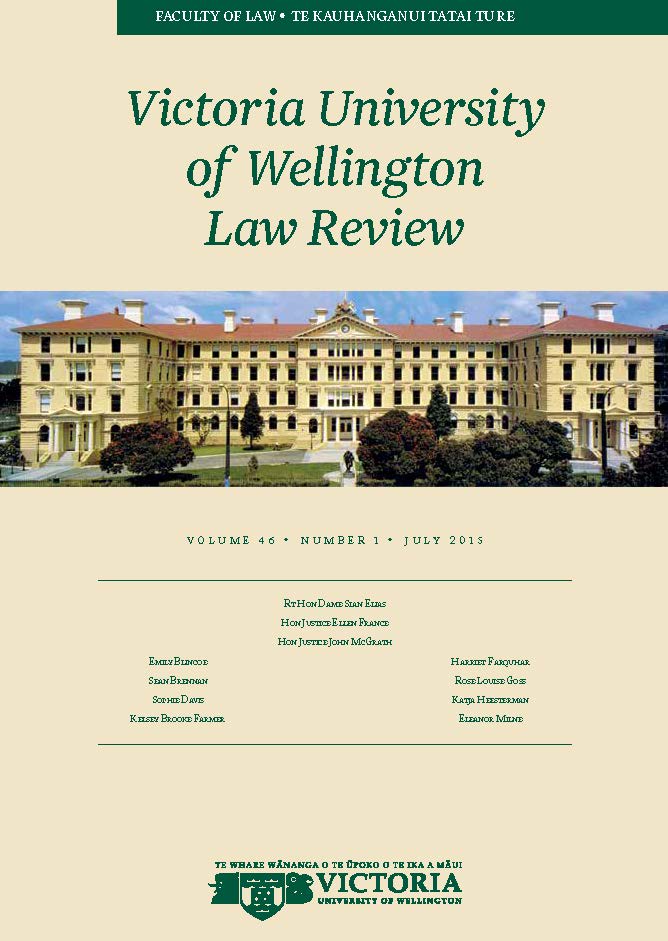Protection Against Slavery in New Zealand
DOI:
https://doi.org/10.26686/vuwlr.v46i1.4927Abstract
The decision of the European Court of Human Rights in CN v The United Kingdom highlighted that slavery remains a modern problem. It may no longer resemble the traditional picture of slavery dramatically presented by Hollywood but it is no less an issue. Modern slavery is less visible; it is hidden away within homes, normal workplaces or in overseas factories. This article argues that New Zealand's current treatment of slavery is inadequate, exemplified by the absence of prosecutions. Thorough protection of slavery requires clear definitions that courts can easily apply. This article explores how the New Zealand Bill of Rights Act 1990 could be used to remedy this situation. This article argues for the application of the Drittwirkung concept to give a horizontal effect to a right against slavery. Furthermore it is argued that New Zealand is under positive obligations to actively prevent rights violations, not merely avoid them. These positive obligations are a key component of modern human rights jurisprudence and can be read into the New Zealand Bill of Rights Act 1990. This article speculates that one action courts could take is to undertake the development of a tort action against slavery.
Downloads
Downloads
Published
How to Cite
Issue
Section
License
Authors retain copyright in their work published in the Victoria University of Wellington Law Review.


